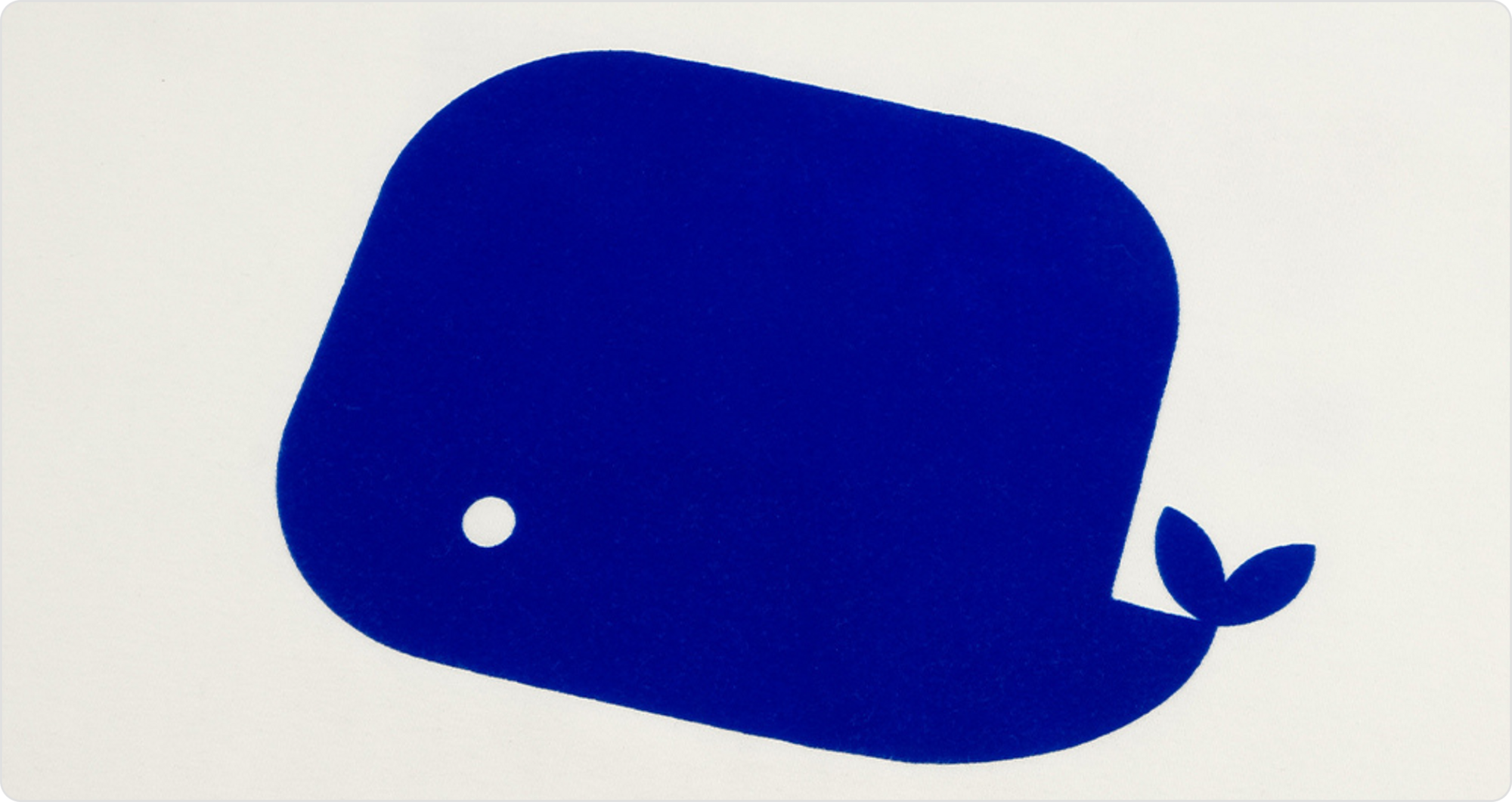Flock printing

Ever seen a design on a t-shirt or hat that looks fuzzy and feels soft to the touch?
That's almost certainly flock printing. This technique creates eye-catching, tactile designs that literally stand out from the fabric and feel great to the touch, too.
In this guide, we'll explore how the flock printing process works, its unique advantages, and our top tips for creating flock printing designs that truly pop.
By the time you're finished reading, you'll be ready to dream up your own custom flock printing projects and make them a reality.
What is flock printing?
Flock printing, also known as flock screen printing, is a textile decoration method that creates a raised, velvety texture. It involves applying tiny fiber particles to an adhesive base on fabric, resulting in a soft, fuzzy design.
The "flock" itself consists of very fine synthetic fibers, usually made from materials like rayon, polyester, or nylon. These fibers are cut to precise lengths and electrostatically charged before application.
Flock printing is particularly effective for bold designs on items like t-shirts, hoodies, and hats.
It adds a premium touch that sets your products apart from standard prints, making them more visually appealing and engaging to the touch.
How does the flock printing process work?
Here's a step-by-step breakdown of how the flock printing process brings designs to life:
- Design preparation: We convert your artwork into a format suitable for screen printing, ensuring it's optimized for flock printing.
- Screen creation: A screen is prepared with your design, similar to traditional screen printing. This screen will be used to apply the adhesive in the next step.
- Adhesive application: A special adhesive is screen-printed onto the fabric in the shape of your design. This adhesive acts as the foundation for the flock fibers.
- Flock application: While the adhesive is wet, flock fibers are applied using an electrostatic flocking machine. This causes the fibers to stand upright on the adhesive, creating the characteristic velvety texture.
- Curing: The printed item is heated up to cure and permanently bond the flock fibers to the adhesive. This step ensures the durability of your design.
- Finishing: Excess flock is carefully removed, leaving behind the finished, textured design ready for wear or use.
The time required for flock printing varies depending on the size and complexity of your design, but it’s typically a quick and simple process. The result is a beautifully textured item that's eye-catching and durable.
Types of flock printing
There are several types of flock printing techniques available:
- Direct flocking: The most common method, where flock is applied directly to the adhesive on the fabric.
- Transfer flocking: Flock is applied to a transfer paper, then heat-pressed onto the fabric.
- Electrostatic flocking: Uses an electric field to orient the fibers vertically for a denser, more uniform finish.
Each method has its own advantages and is suited to different applications, but direct flocking is the most common and efficient method.
Flock printing vs. standard screen printing
While flock printing shares some similarities with standard screen printing, there are key differences. Let's compare:
As you can see, each technique is different and has its own advantages. Flock printing offers unique texture and visual impact, while standard screen printing offers versatility.
What designs work best with flock printing?
Flock printing excels at creating bold, eye-catching designs. Some types of designs are particularly well-suited to this technique:
- Simple logos with bold lines
- Large text or lettering
- Solid color designs
- Geometric shapes and patterns
- Sports team numbers and emblems
- Retro or vintage-inspired graphics
These design types maximize flock printing's unique texture and visual appeal, allowing the raised, velvety finish to shine.
Conversely, designs with gradients, photorealistic details, or very thin lines may need to be simplified or adjusted for flock printing. The nature of the flock fibers means that extremely fine details can be lost in the printing process.
Thus, in general, it's best to avoid:
- Ultra-fine, intricate details
- Small text
- Designs requiring many color changes
- Photorealistic images
- Complex gradients or color blends
Following these guidelines will ensure your flock printing designs look their best and take maximum advantage of the technique's unique characteristics.
The best products for flock printing
Flock printing can be applied to many fabric items, but some products are particularly well-suited to showcase its unique texture:
- T-shirts and sweatshirts
- Hoodies
- Baseball caps and beanies
- Tote bags
- Team jerseys
- Decorative pillows
- Jackets and outerwear
- Custom patches
When choosing a product for flock printing, opt for items made from sturdy, tightly woven fabrics for best results.
Very thin, stretchy, or heavily textured materials may not be suitable for this technique as they can affect the quality and durability of the flock design.
Flock printing advantages and disadvantages
Understanding the flock printing advantages and disadvantages can help you decide if it's right for your project:
Advantages of flock printing:
- Unique, velvety texture
- Eye-catching, raised designs
- Durable when properly applied
- Works well on a variety of products
Disadvantages of flock printing:
- Limited detail compared to some other printing methods
- Generally more expensive than standard screen printing
- Not suitable for all fabric types
- May require special care when washing
It’s also important to note that when multiple colors are used side-by-side in flock printing, there will be a tiny gap between different color blocks in your design. This is not a mistake, but an inherent characteristic of the flock printing process.